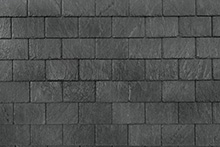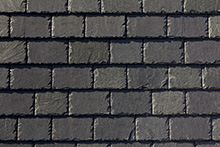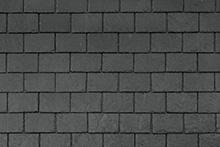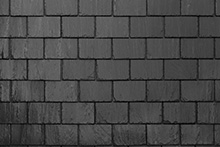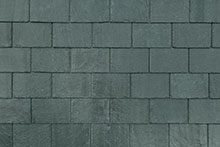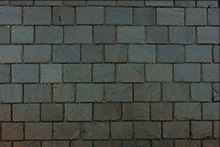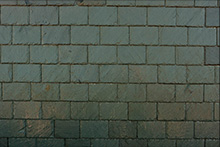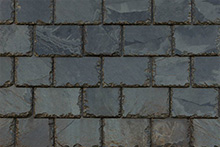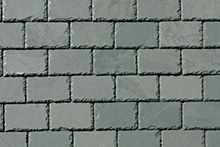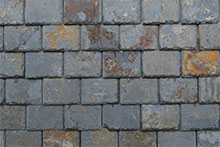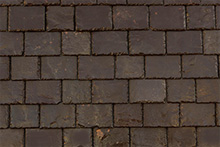California Slate Company, Inc.
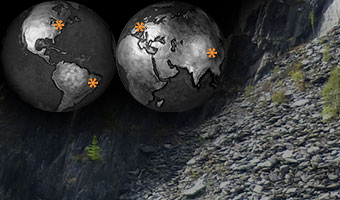
Frequently Asked Questions (FAQ)
-
Q: What size does roofing slate come in?
A: Standard lengths are 12″, 14″, 16″, 18″, 20″, 22″, and 24″. Standard widths vary somewhat depending on the lengths. The narrowest common width is 1⁄2 the height (for example: 12″ × 6″,14″ × 7″, or 16″ × 8″).
Aside from the standard slate sizes, it’s usually possible to have other sizes specially made, but most producers will demand a premium for deviating from standard production. There are limits, of course, but we have seen roofing slates as large as 30″ × 24″ and as small as 9″ × 6″.
-
Q: How thick is roofing slate?
A: Standard thickness roofing slate is 1⁄4″ nominal thickness. Slate is still split by hand, most often with hammer and chisel, sometimes with a pneumatic chisel. The experienced eye of the splitter is the primary thickness gauge, and thus a 1⁄4″ thickness will usually vary by at least 1⁄16″ in either direction.
It’s not unusual for a roof design to call for slates that are thicker than standard production such as 3⁄8″ to 1⁄2″,1⁄2″ to 3⁄4″, or even 3⁄4″ to 1″ or more. Slate which is two or three times thicker than standard will usually be significantly more expensive.
-
Q: What makes slate brown?
A: Brown slate does not come out of the ground as brown slate. Brown slate occurs in “weathering” or “semi-weathering” slate when it is exposed to the elements. Which slates are destined to turn brown is not readily apparent at first (it takes a few months of full exposure to the elements), so if brown is not a desired color in the finished roof, then “unfading” slate should be specified. The percentage of brown that will occur in “weathering” and “semi-weathering” slate will vary from quarry to quarry, with some deposits turning almost 100% brown and others only 10%. Knowing the weathering characteristics of the stone you’re using makes good sense and avoids unpleasant surprises and misunderstandings.
In addition to natural forms of weathering, slate can be discolored by any number of environmental factors, including tree sap and various forms of air pollution.
-
Q: What is a “square”?
A: The term “square” in reference to roofing materials refers to 100 square feet of roof area. One square of slate is the amount of slate that it takes to cover 100 square feet of roof area. A 10′ × 10′ section of roof would equal one square. So would a 4′ × 25′ section and a 5′ × 20′.
The number of pieces required to cover one square is dependent on the size (or sizes) of the slate. The larger the slate, the fewer the pieces per square.
-
Q: How do I figure out how many squares I need?
A: Depending on the complexity of the roof, you may need to dust off your book of geometric formulas for this. With or without architectural drawings, you need to compute, estimate, or guesstimate the area of all the roof surfaces that will need to be covered. Those numbers, converted to square feet, are what you need. For example, if you figured 2000 square feet, you need 2000 square feet ⁄ 100 square feet in a square = 20 squares of slate.
A simple roof might be all rectangles (Area = length × width). There are often triangular sections to compute (Area = the base × height ⁄ 2). Sometimes the roof features trapezoidal sections and less often, cone-shaped sections. If your roof is complex in structure, it’s best to get the advice of a professional before placing an order.
-
Q: What is headlap and why is it important?
A: Headlap is the portion of the slate that is overlapped by two layers of slate, and is what makes the roof watertight. Standard headlap is 3″ and should be adhered to unless the pitch is very steep (greater than 20⁄12), in which case you can reduce headlap to 2″, or very shallow (less than 6⁄12), in which case headlap should be increased to 4″ as moisture will not shed as readily. Calculations involving exposure (the visible portion of the slate) and coverage (pieces to cover one square) are influenced by the headlap.
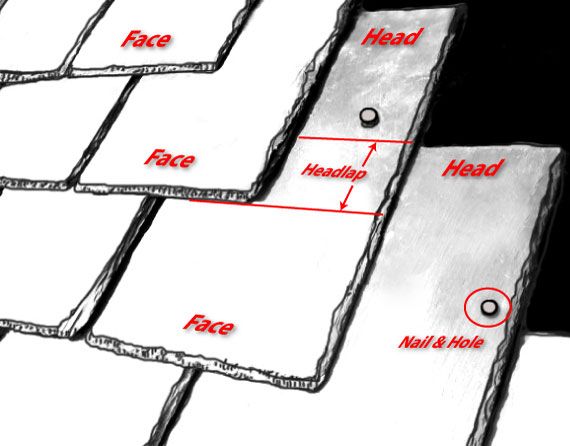
-
Q: How much of the slate shows?
A: The portion of the slate that you can see (not buried under succeeding layers) is referred to as “exposure”. Exposure is dependent on the headlap and calculated by: (length − headlap) ⁄ 2.
For example, an 18″ tall slate will have an exposure of 7 1⁄2″: (18″ − 3″) ⁄ 2 = 7 1⁄2″
-
Q: What minimum roof pitch is required in order to utilize slate?
A: With special consideration for slate size, headlap and underlayment, natural roofing slate can be applied to roofs with a slope of four inches per foot.
-
Q: What roof decking is required for the application of slate?
A: One-inch board sheathing or 3⁄4″ APA plywood provides a suitable deck material for the installation of natural slate. This material provides minimum deflection during nailing, supports the weight of the slate between rafters and provides adequate resistance to nail pull out.
-
Q: Can you suggest a competent slate roofing contractor who can supply the slate and install my roof?
A: We maintain a database of qualified North American roofing contractors who have the necessary skills and experience to install your roof. With some basic information regarding your roofing requirements, we can recommend the contractors that are most capable and interested in your type of project.
-
Q: How much are freight charges?
A: Freight rates are dependent upon a number variables—the weight of the shipment and destination being the two most significant. Every delivery is unique and we have years of experience and a number of time-tested options to deliver the goods in an appropriate and timely manner at the best possible price. California Slate Company may directly deliver if you are located in the Bay Area of Northern California.

